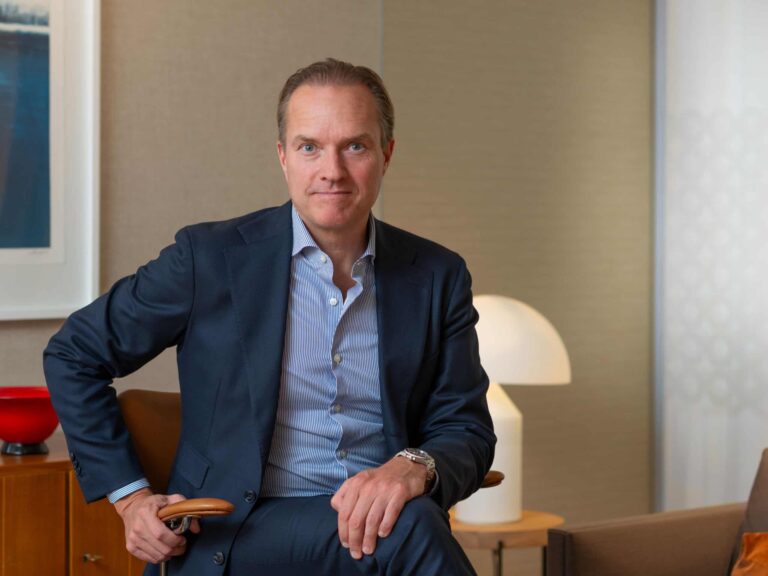Private markets have gained popularity and appeal in the not-so-distant low-interest- rate environment, attracting investors with the promise of higher returns and portfolio diversification. What was once an exclusive universe for institutional investors is now becoming more accessible through semi-liquid funds, also known as open-ended evergreen funds. Schroders Capital offers its own range of semi-liquid solutions that provide exposure to private equity, infrastructure, and real estate.
Historically, access to private markets was restricted to closed-ended investment vehicles, which come with significant barriers such as high investment minimums, capital call drawdown structures, and long lock-up periods. In contrast, semi-liquid funds offer investors periodic liquidity while still allowing access to private equity, infrastructure, and other illiquid alternative asset classes. Structured as Luxembourg AIF, Schroders’ semi-liquid fund range offers “monthly liquidity for subscriptions and quarterly liquidity for redemptions,” explains Johan Strömberg, Director of Private Asset Sales at Schroders.
“[Liquidity] only becomes an issue when the redemption cap of five percent per quarter is reached.”Johan Strömberg, Director of Private Asset Sales at Schroders.
Investors can subscribe and redeem at regular intervals at the prevailing net asset value (NAV), with an annual redemption cap of 20 percent of NAV, equating to five percent per quarter. One of the challenges with semi-liquid funds is managing the liquidity mismatch between the underlying illiquid assets and the liquidity offered to investors. Strömberg explains that liquidity “only becomes an issue when the redemption cap of five percent per quarter is reached.” However, there are mechanisms in place not to reach the five percent quarterly cap.
These mechanisms vary depending on the fund’s underlying assets but typically involve liquidity sleeves composed of cash or liquid investments such as public equities. “We keep five percent to ten percent of the funds in cash, with a very low element of listed equities in some funds.” says Strömberg. For yield-generating asset classes such as infrastructure, the cash flows from the yield component further help liquidity management. More importantly, “the 90-day notice period for redemptions in all funds offer clarity into upcoming outflows, which can often be matched by monthly inflows.” In times of high redemption pressure, “there is a control mechanism in place to gate the funds when redemptions exceed 20 percent of NAV,” according to Strömberg. Semi- liquid structures, therefore, are designed to provide liquidity in a controlled manner.
Schroders’ Private Equity Funds: Focus on Co-Investments and Secondaries
A well-constructed portfolio across geography, sector, type, and vintage can also engineer a level of “natural liquidity.” For its three semi-liquid private equity funds, Schroders Capital focuses primarily on co-investments and secondaries rather than primary funds. “We prefer co-investments and secondaries due to the visibility they offer and the maturity of these investments,” says Strömberg. “If we do invest in primary funds, we prefer late-stage primaries with high visibility on existing investments, as primary fund investments create cash flow planning challenges,” explains Strömberg. The aim is to avoid J-curve effects as much as possible.
“We prefer co-investments and secondaries due to the visibility they offer and the maturity of these investments.”Johan Strömberg, Director of Private Asset Sales at Schroders.
While reducing costs is not the primary goal, the focus on co-investments and secondaries does help minimize fees for end investors. “In primaries, you face the full 2-and-20 fee structure, whereas co-investments generally have no carry fee, and secondaries typically come at half the fee level of primaries,” says Strömberg. Another advantage of focusing on secondaries, particularly in GP-led single-asset transactions where Schroders Capital focuses on, is the ability to purchase star assets with continued upside potential, offering both growth and risk mitigation properties. “The loss ratio on GP lead secondaries is only 2 percent, based on our measures,” notes Strömberg, adding that “while the upside still is there on GP-leds, the visibility and maturity of these GP-led secondaries also make them appealing from a risk mitigation perspective.”
In addition to preferring co-investments and secondaries, Schroders Capital targets lower mid- market businesses with enterprise values between $150 million and $500 million, focusing on sectors such as technology, healthcare, consumer, and industrials. “These are our four main sectors, although almost everything today has some kind of tech angle,” Strömberg says.
Final Thoughts on Semi-Liquid Structures
The rise of semi-liquid fund structures has largely been driven by demand from smaller investors seeking access to institutional-grade private market investments. “The popularity of the semi-liquid structure has definitely been influenced by retail and private banking clients,” notes Strömberg. However, institutional investors are also showing increased interest, particularly due to the flexibility these structures offer. In general, these structures represent a trade-off between liquidity, returns, and fees.
In contrast to traditional private market investments, which typically offer higher returns accompanied by limited liquidity, semi-liquid funds provide more frequent liquidity – often through quarterly redemption windows – while still delivering competitive returns. As Johan Strömberg, Director of Private Asset Sales at Schroders, explains: “A traditional infrastructure fund with a buy-and-hold structure might have a 20- year lifespan, but semi-liquid evergreen structures offering quarterly liquidity provide an easier way to access the asset class.” However, this added liquidity may come at the cost of slightly lower returns, as semi-liquid funds maintain slightly higher cash reserves to accommodate potential redemptions.
“A traditional infrastructure fund with a buy-and-hold structure might have a 20- year lifespan, but semi-liquid evergreen structures offering quarterly liquidity provide an easier way to access the asset class.”Johan Strömberg, Director of Private Asset Sales at Schroders.
On the cost side, Schroders’ semi-liquid funds feature a simplified fee structure. Unlike many private market funds that charge performance fees, these strategies apply only an annual management fee. “Our strategies don’t charge a performance fee at the fund level, though we may incur performance fees on a few underlying investments, such as primaries,” Strömberg notes. “Investors can simply focus on the NAV when investing, with no need for complex cash planning, gaining access to high-quality managers we have been collaborating with for years.”
At the same time, the semi-liquid structure enables investors to “ramp up investments to full exposure instantly,” according to Strömberg. “These funds represent a good gateway into private markets asset classes,” concludes Strömberg, “and for investors who want to expand their exposure to private markets, we help them on their journey, whether they choose fully closed-end structures or other options.”









